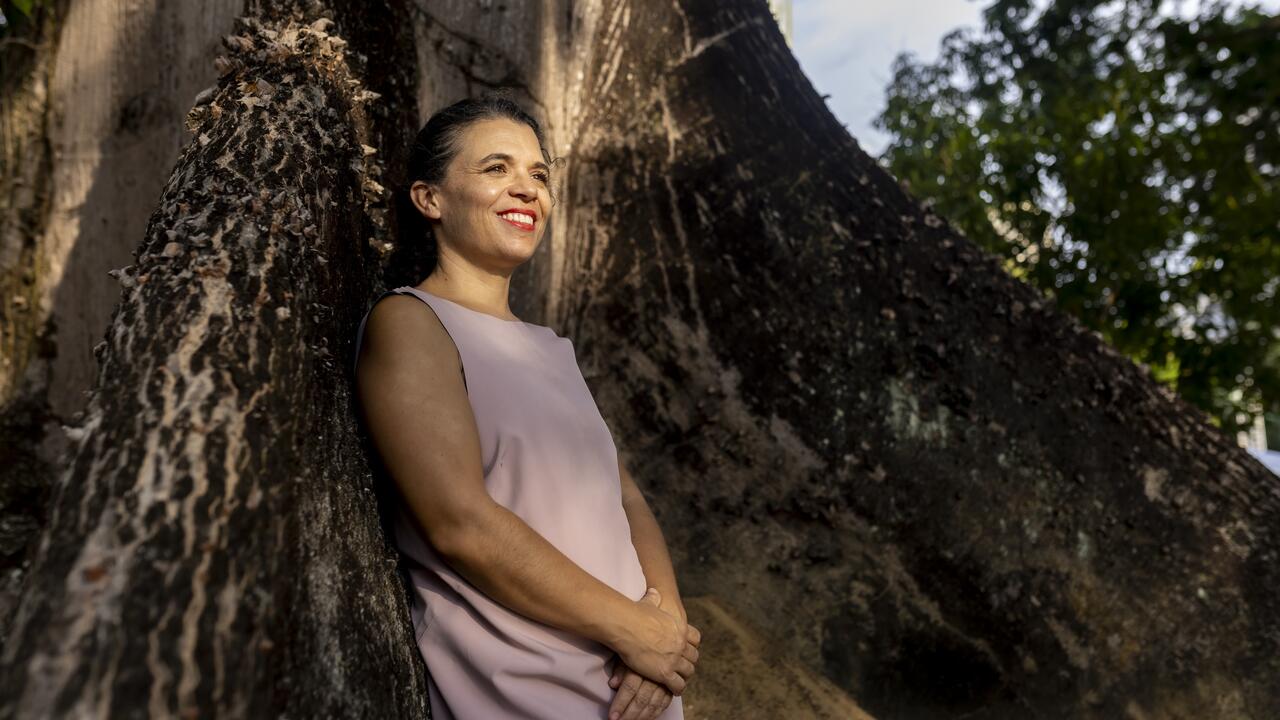Ian Kiaer

Ian Kiaer’s work deploys two kinds of scale and asks you to encounter it in two ways at once. The work’s complexity derives from the fact that it is not possible to experience these two modes simultaneously. The first kind of scale is literal – the stuff of Minimalism and post-Minimalism. The work is scaled to the size of your body and dramatized by your movement around it. Rectangular cardboard tubes, once used to package fluorescent lights, stretch across the floor, just so far away from your feet. Some distance beyond, a painting hangs on the wall at eye-level. You walk around the show to find small cubes at your toes. A turquoise sheet of synthetic foam bends around at knee height.
Some of the objects aren’t just found but cut up and arranged by Kiaer to resemble models, although they are more like memories or suggestions of models. Often these objects invoke architectural structures such as amphitheatres. So a second kind of scale comes into play – that of the imaginative encounter. Looking down on these ‘maquettes’, you need to picture yourself tiny, sitting on the amphitheatre steps. As you think what it would be to inhabit this work with a Lilliputian body, everything in the room begins to shift. A stain on the floor, an electrical socket – suddenly all these details are part of the scenario. Plenty of artists like to make tiny models, but what sets Kiaer apart is that the space of fiction is deliberately made to collapse. The human scale pulls you back from the miniature one, and there are always specific contradictions. For instance, at 1.6 metres, I can see over a bent strip of foam that forms an element of one work, right over to its other side. But the minuscule viewer that I imagine could not – to him or her the strip would be a massive sheer cliff. In this respect Kiaer’s work recalls a moment of sculptural history that seems to have been forgotten – Joel Shapiro’s works of the mid-1970s, with their tiny model houses set out in empty gallery spaces.
It’s because of this double scale that Kiaer can deploy found objects in a different way from an artist such as Gabriel Orozco. In this exhibition they included an empty box and a football bladder, which resembled a Plasticine ball. But there’s really no more than an immediate material similarity to Orozco because these objects are always being asked to be seen as something else: the box as a stage, the ball as a piece of a landscape. Yet Kiaer’s interest is in the fragility of simile – he may want to tempt us to see these objects as like other things, but he’s just as interested in reminding us that they are thrown-away bits of urban rubbish. The dynamic between the literal and imaginative status of the objects is also achieved through colour and dirt. The colour of some of the objects Kiaer uses defamiliarizes them, making them seem appropriate parts of the imagined scene. A cylinder, for example, is such a strange pink that we don’t recognize it as a former light cover. Yet their grubbiness pulls them back, reminding us they all came from the street.
On the walls there are stretched pieces of material, sometimes picking up the colours of the things on the floor. Other wall-hung objects are painted on, and these paintings have a double status like the floor objects, but one that concerns itself with materiality and image rather than scale. Kiaer works on tatty pieces of found cloth. Pre-existing stains are accompanied by those he’s made with his paintbrushes, which here delicately depict birds. Look closer, and you can see that he has drawn pencil outlines of other figures – a bull, a tree. So why has he only painted in some of the outlined shapes? If the fabrics used to make the paintings on are cast-outs, used up and finished, the images have the opposite status – they are incomplete, potential and promising.
The birds and outlined shapes are fragmentary quotes from Old Masters such as Piero di Cosimo and Pieter Brueghel. This kind of allusion makes the paintings even stranger, as it jars with their scrappy appearance. A very different mode of connection exists between the works as a whole and the subject of Kiaer’s wider research. This show comes out of his study of the avant-garde architect and designer Frederick Kiesler, as is signalled in the press release and in the titles – for instance, Endless House Project/(Pink) or Endless Theatre Project/Stadium (Black) (both 2004). But the works do not resemble Kiesler’s models or stage sets. So how do we make sense of the connection? We are more than used to seeing an object whose title asks us to think of it beyond the limitations of its physical status. For this reason Liam Gillick’s Discussion Platforms (1996–ongoing) provoke great scepticism, but I feel that the mode of connection between Kiaer’s work and Kiesler’s ideas is less tenuous but more complex.
You can see why Kiesler matters to Kiaer, given his similar resistance to working in any one medium. But do these works create the endless space that Kiesler imagined? Not really – owing to the double scale, space is fragmented more than unified. But because of the way the ensembles of objects and paintings work in gallery space, we are always reminded of the contingency of positions, of the disconnections as much as the links between the various parts, of the propositional and suggestive, rather than resolved, status of the quasi-models. Perhaps it is in this way that Kiesler’s thought, if not his works, is rearticulated.

















